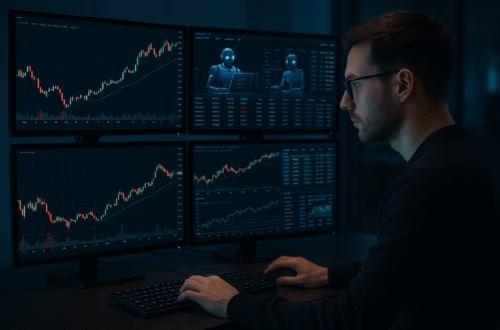When we say dow jones stock markets futures, we’re referring to futures contracts tied to the Dow Jones Industrial Average (DJIA) index — often used by investors and traders to gauge the likely open/road ahead for U.S. stock markets. These futures allow for pre-market positioning, risk management and directional bets. For traders using automation (like PickMyTrade), tracking futures is essential to set the tone, adjust parameters or pause algorithms if instability is likely.
Current 2025 update on the Dow Jones futures and broader markets
Futures snapshot
According to current data, Dow Jones futures (U.S. 30 or YM contracts) are showing slight variance ahead of the open — for example, on Investing.com the “US30·Derived·USD Real-time” contract shows fluctuations ahead of the cash open. Indices provider IG shows DJIA futures at ~₤ 47,249 (-0.21%) in an example snapshot.
What’s driving the futures move
- Recent commentary from U.S. policymakers helped sent futures higher: a calming tone on U.S.–China trade and tariff risk saw Dow futures jump nearly 600 points in one session.
- Broader interest-rate and inflation signals: For example, the Dow hit a record when Federal Reserve Chair Jerome Powell suggested possible rate cuts.
- Tech sector volatility: Because futures for the Dow (and S&P/Nasdaq) often reflect tech-led moves, headlines around chipmakers, AI spend and macro risk feed into the futures pricing.
Why futures behaviour matters for the open
For a trader using automation like PickMyTrade, the futures reading is more than just context — it can signal:
- Whether your strategy should reduce leverage ahead of open.
- Whether to hold off on new signals if futures show large gaps or wide sentiment risk.
- Whether to shift focus: e.g., high futures might support bullish setups; weak futures might warrant hedging or watch-only mode.
Click Here To Start Futures Trading Automation For Free
How automation traders can use “dow jones stock markets futures” in their workflow
- Pre-market filter – At a designated time (e.g., 1 hour before open), have PickMyTrade check DJIA futures: if the contract is more than ±0.5% from previous cash close, trigger “reduce risk” mode.
- Signal scaling – If futures suggest strong positive bias, your automation may allow full position size; if futures indicate weakness, scale down trades or tighten stop-losses.
- News trigger override – Because futures often react to macro-news (trade war, Fed comments, large economic report), build logic: if futures move fast because of new headline (e.g., Trump/China tariff comment) then pause entry for X minutes.
- Portfolio balance – Use futures reading to adjust allocation: bullish futures → favour long momentum trades; bearish futures → favour mean-reversion or hedged trades.
- Post-open feedback – After market open, compare how cash index gaps aligned with futures. Use that data to refine future automation rules (which futures move thresholds correspond to actual market behaviour).
In short: by weaving Dow Jones stock markets futures into your automation logic, you move from “signal only” to “signal + context”-aware trading.
Key takeaways for the modern trader
- The phrase dow jones stock markets futures isn’t just fancy — it’s a powerful early-warning gauge for U.S. equity sentiment and potential open moves.
- Futures are sensitive to macro-risk, policy, liquidity, tech-sector headlines and global events — so they must be included in your automation risk-filters.
- Automation tools like PickMyTrade give you the capacity to act systematically, but the edge comes when you also incorporate pre-market signals (futures) and external context.
- Volatility or gaps implied by futures should adjust your risk posture, not be ignored.
- Continuously monitor how futures behaviour aligns with actual market opens and refine your rules accordingly.
FAQ – Most Asked Questions
These are futures contracts tied to the Dow Jones Industrial Average index, allowing traders to buy/sell implied future value ahead of the cash market open.
Because futures reflect sentiment, risk and upcoming market direction; they provide clues on gap opens, potential momentum or reversals which affect all trading strategies.
While thresholds depend on your system, many traders use ±0.5% or ±1% deviation from previous close as warning-zones. Larger moves often signal increased risk.
You would program a pre-trade filter: check futures contract value at set time; if move exceeds threshold OR news-trigger detected, either reduce size, pause strategy or adjust stop/take parameters.
No—they provide indication but not guarantee. External surprises, liquidity gaps or sudden news can disrupt expected correlation. So they must be used as part of a broader system, not in isolation.
Also Checkout: Automate TradingView Indicators with Tradovate Using PickMyTrade





